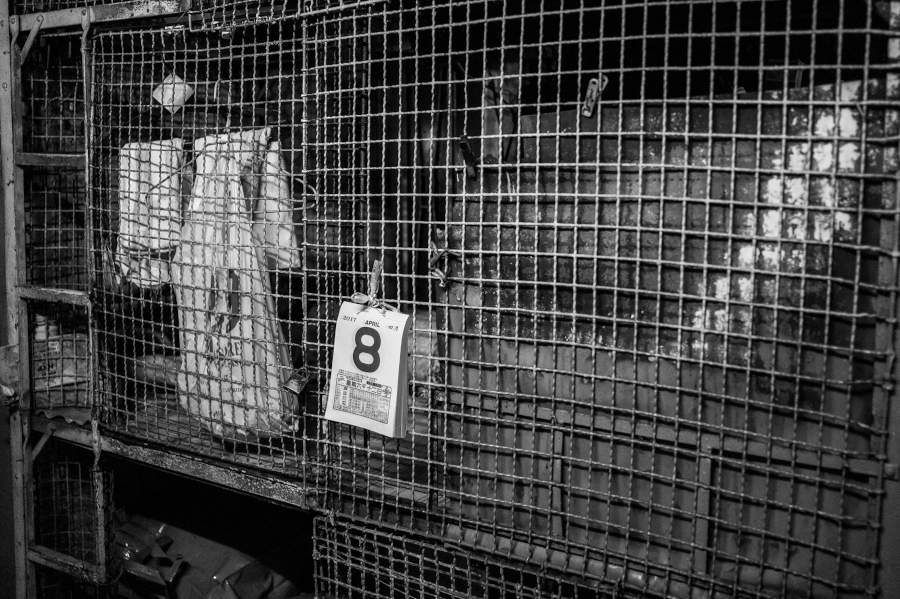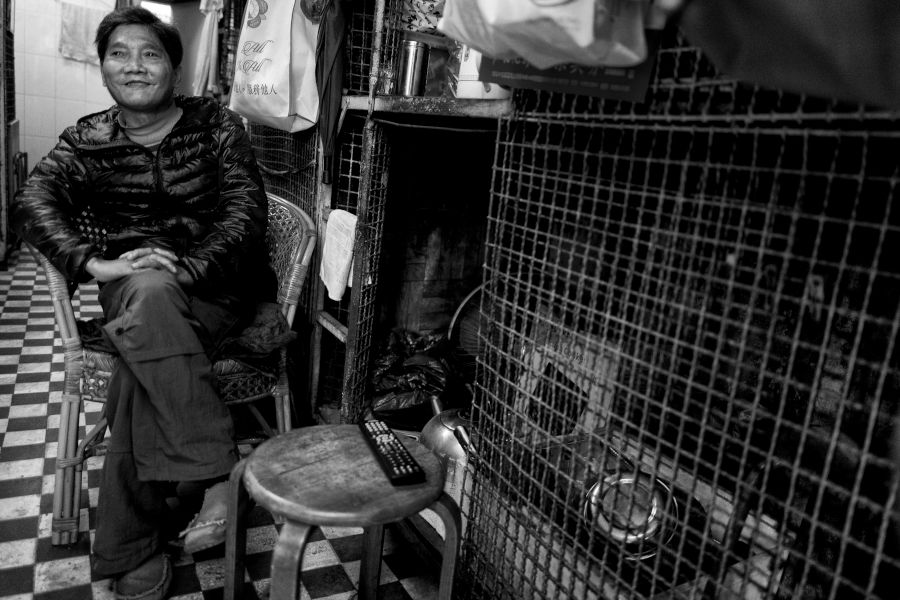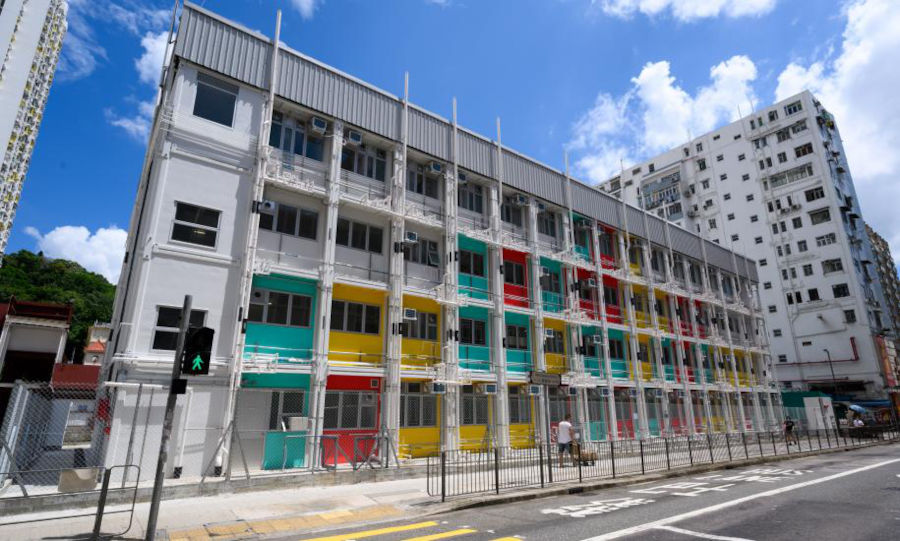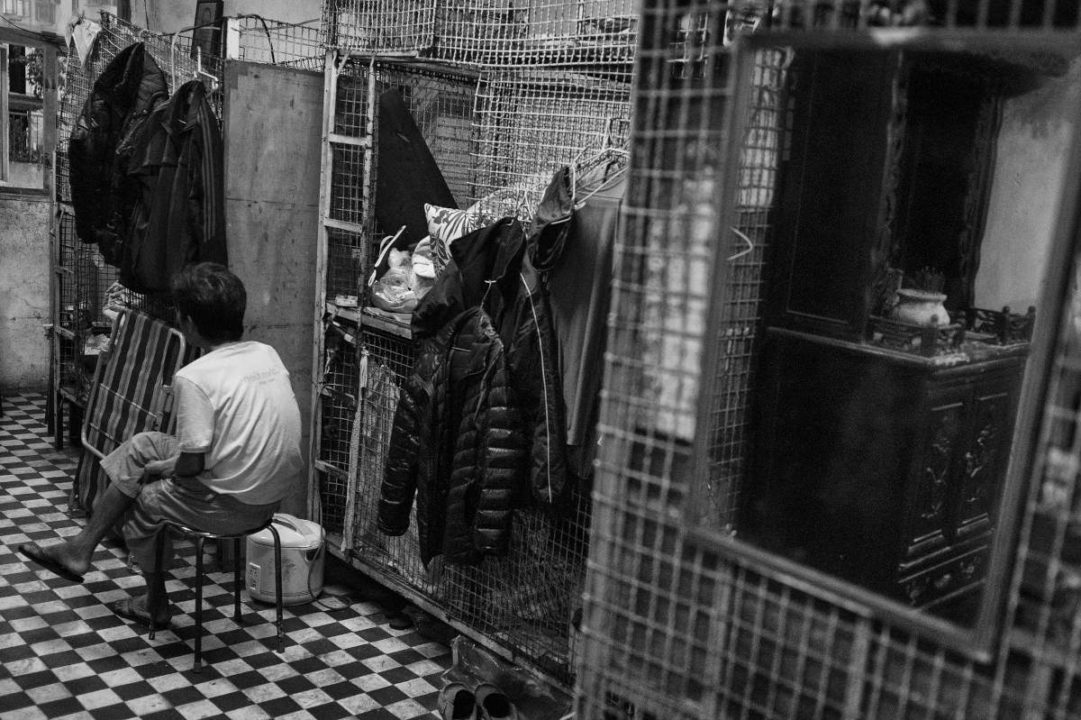Photographer Benny Lam shocked the world with Subdivided Flats, a photo series for a campaign by local NGO SoCo shedding light on Hong Kong’s housing problem.
While their existence was not unknown, awareness of just how tiny the ‘coffin cubicles’ – the common name for the living spaces the size of a twin bed which originated in Hong Kong – really were, was on the periphery of the international community’s minds. The cluttered birdseye perspective, capturing the entirety of subjects’ possessions in a single shot, brought this reality into sharp focus.
A 2016 Census & Statistics Department report shows that almost 200,000 people in Hong Kong live in coffin homes.
What are coffin homes?

Official terminology for these spaces is ‘bedspace apartments’, and they are absolutely legal to run. The government defines them as apartments which rent out more than 12 bedspaces. The median rental cost is 4,200 Hong Kong dollars a month.
And there are many, many more that illegally rent out a lot more than 12. The median area of a home in Hong Kong, at 40 sq. metres, is commonly divided into as many as 20 double decker bedspaces.
Focused primarily in older urban districts such as Sham Shui Po, Mong Kok, and Tai Kok Tsui, they are 5-8 sq. metres boxes partitioned by thin wood panels. They are built to accommodate the length and width of a single mattress, with enough room to sit up. The sub-divided unit’s bathroom and ‘kitchen’ (often a portable stove stuck on the bathroom counter) are usually shared by dozens of residents.
How did coffin homes start?

Coffin homes originated in the 1950s in response to the sudden population increase spurred by refugees of the Chinese Civil War and baby boom brought on by a prosperous economy. The first were metal bunk beds with frail wire walls, hence the common phrase ‘cage home’.
Hong Kong’s deep-rooted housing problem

At the core of the issue is Hong Kong’s limited space, half of Seoul’s land area. All land is state-owned, the government granting leasehold rights of 50 years at a time.
This, combined with factors like one million out of the city’s population of 7.5 million living below the poverty line, makes Hong Kong the hardest place in the world to afford a home.
Low-income families and elderly individuals can apply for public housing from the government’s Housing Authority. However, applicants wait for 5.5 years on average. Meant to be a temporary solution while in transition, many live in coffin homes for years or even decades.
There’s a need for a lot more housing. However, land that could be converted into housing is not being converted for reasons such as, as ex-lawmaker Nathan Law puts it, the government being unwilling to challenge special interests groups like property developers or foreign investors.

Even a 2018 initiative to build 15,000 transitional portable homes by 2023 for people awaiting their turn to get public housing is falling short, with only 800 built in late 2020. That’s 5% of the goal met.
Coffin homes are a sad band-aid solution for the “ignored” fundamental human right of residence. With few policies to increase housing supply, stringest COVID-19 entry measures stifling economic recovery, and the majority’s acceptance that Hong Kong’s housing problem is unsolvable, it seems that tiny living spaces are here to stay.
Header image credits: Jonathan van Smit, CC BY-NC-ND 2.0




